Trust Through Citations: Redesigning AI Legal Research for Litigation Lawyers
MY ROLE UX Design Consultant responsible for redesigning the citation experience and overall interface to match litigation lawyers' mental models and workflows.
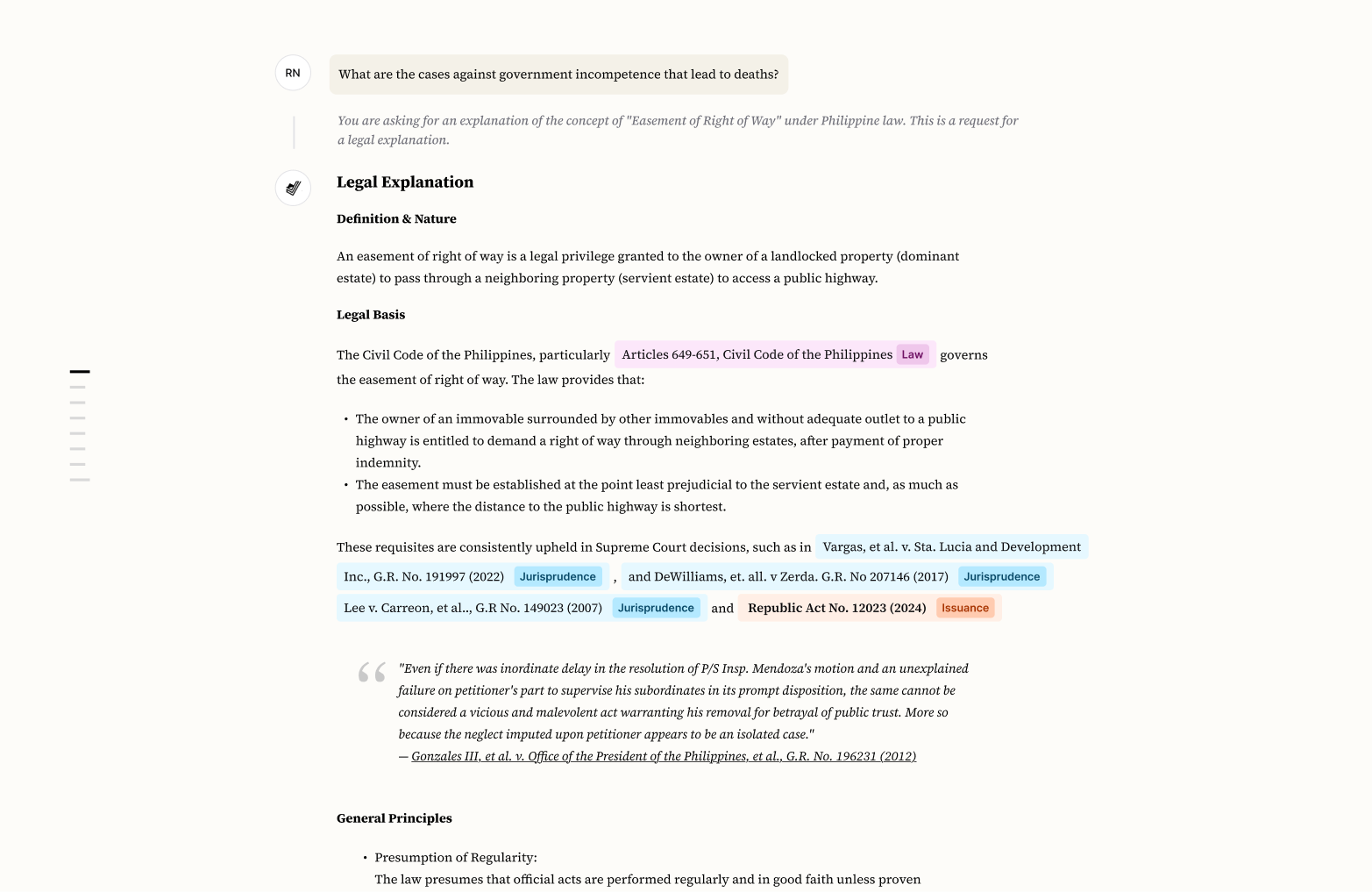
Problem
Lawyers using Anycase.ai's AI-powered research struggled to trust AI-generated answers. While the AI provided accurate information, lawyers needed to verify every citation—their reputation depends on accuracy. The existing interface treated citations as afterthoughts (simple blue links), ignoring how lawyers actually work with legal references.
Journey
- Started: 50+ scattered components, no documentation, constant design debates
- 6 months: Core visual foundations and component library established
- Year 1: Intent-based pattern framework implemented
- Now: 40+ components, 20+ intent patterns, 90% reusability, 4 designers using it
Approach
- Visual Language: Transformed citations from links to highlight-style tabs, matching lawyers' physical annotation behavior
- Trust Building: Added hover popovers showing canonical document previews - lawyers can verify without leaving their flow
- Progressive Disclosure:
- Hover: Quick preview with source verification
- Click: Sidebar reader for deeper investigation
- Full view: Complete document in new tab
- Familiar Aesthetics: Shifted to serif typography and traditional legal document styling
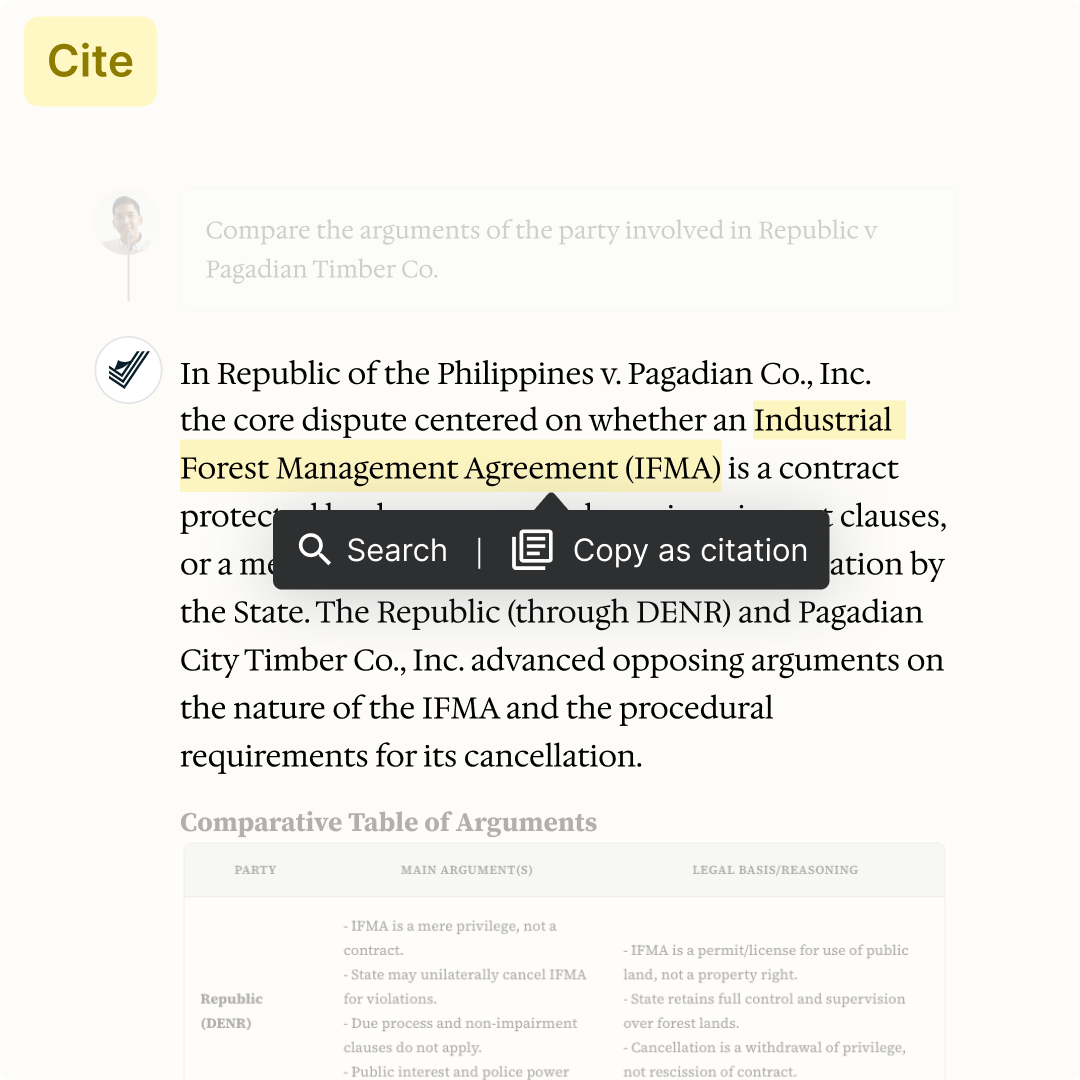
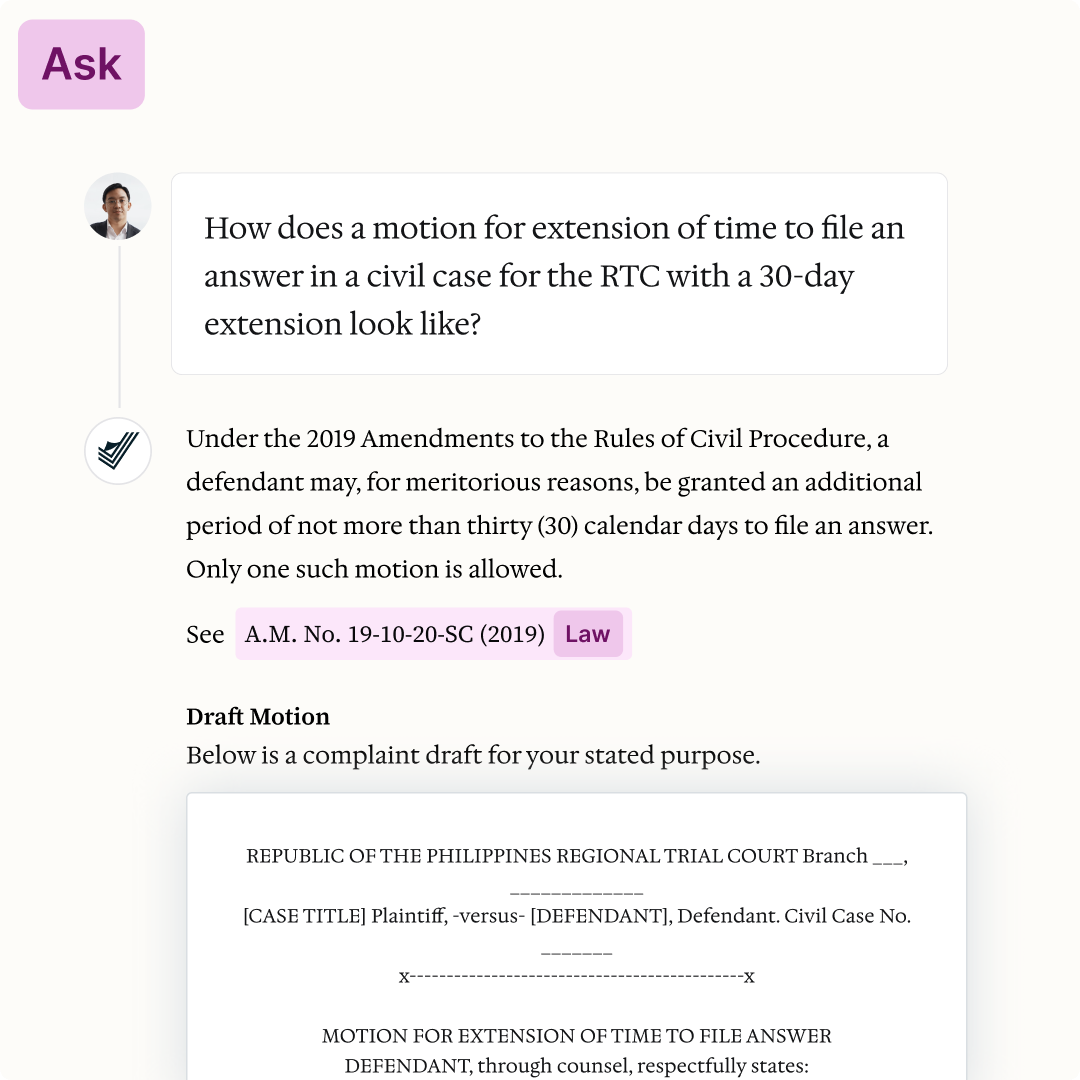
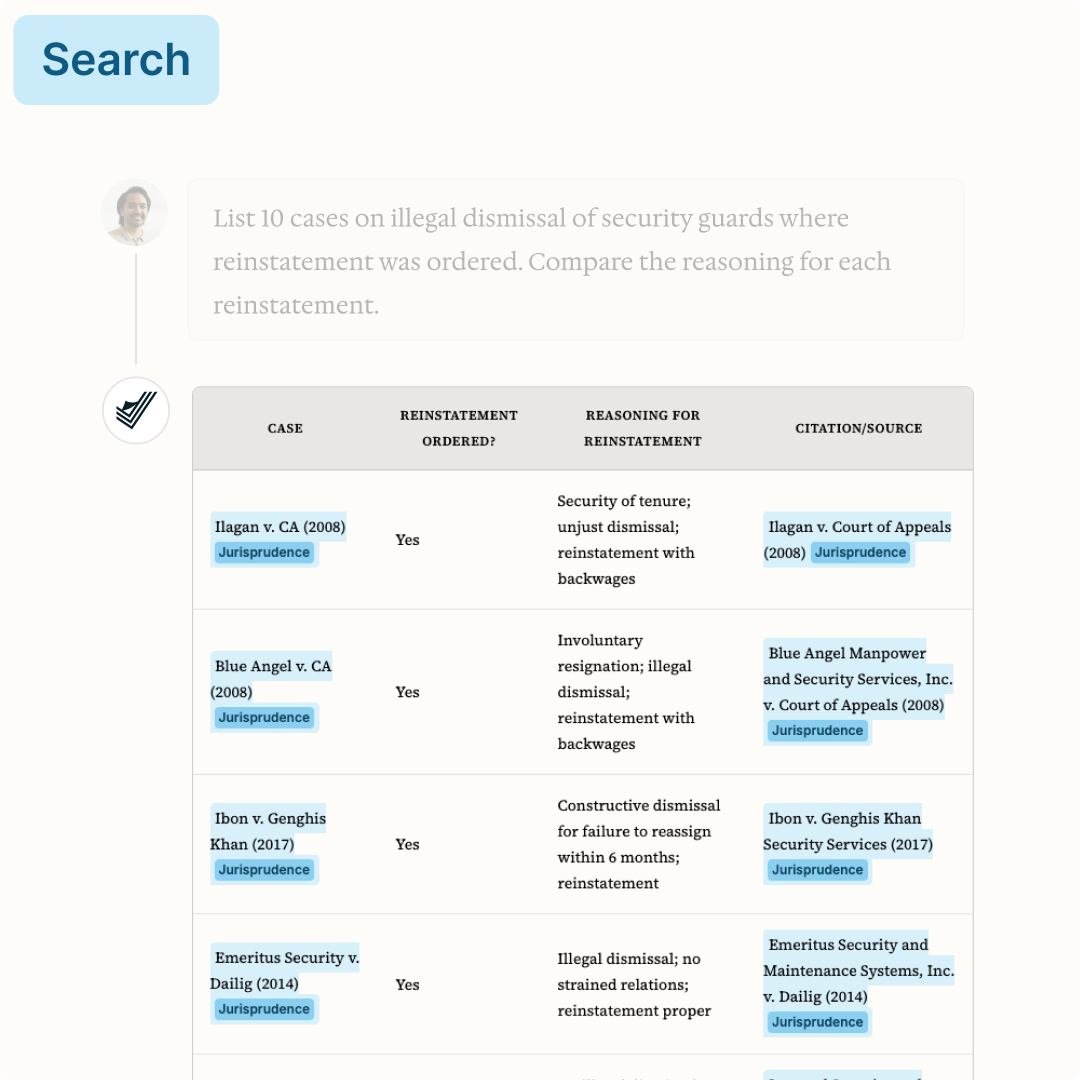
Key Insight
Anchor the interface to what is familiar to user
The design was anchored on observations on how lawyers read and analyze files: through their trusty highlighters. Not only is this familiar, but it is a great break from such long and boring text. They read the paper once, but then most of the time, their intent is to scan and look for something specific. This is the first step into building trust.
Solution
Citation as Highlights
- Color-coded by source type (laws, jurisprudence, regulations)
- Labeled clearly (not just blue links)
- Scannable and distinct from regular text
Hover Preview System
- Shows actual canonical document (not just metadata)
- Quick verification without context switching
- Builds trust through transparency
Sidebar Reader Integration
- Direct link from citation to source
- Copy-to-cite functionality
- Maintains context while researching
The redesigned interface transforms how lawyers interact with AI-generated legal research. Citations now appear as highlighted tabs (mimicking lawyers' annotation habits) rather than simple links, with color-coding to distinguish laws (yellow), jurisprudence (blue), and regulations (green). On hover, a popover displays the actual canonical document preview—not just metadata—allowing instant verification without losing context. The sidebar reader provides a focused view where lawyers can dive deeper, with a "copy to cite" feature for easy reference building. The entire interface shifted to serif typography and traditional legal document styling, making the AI feel familiar rather than foreign. This multi-layered approach—from quick hover previews to deep-dive reading—respects how lawyers naturally verify information while building trust through transparency.
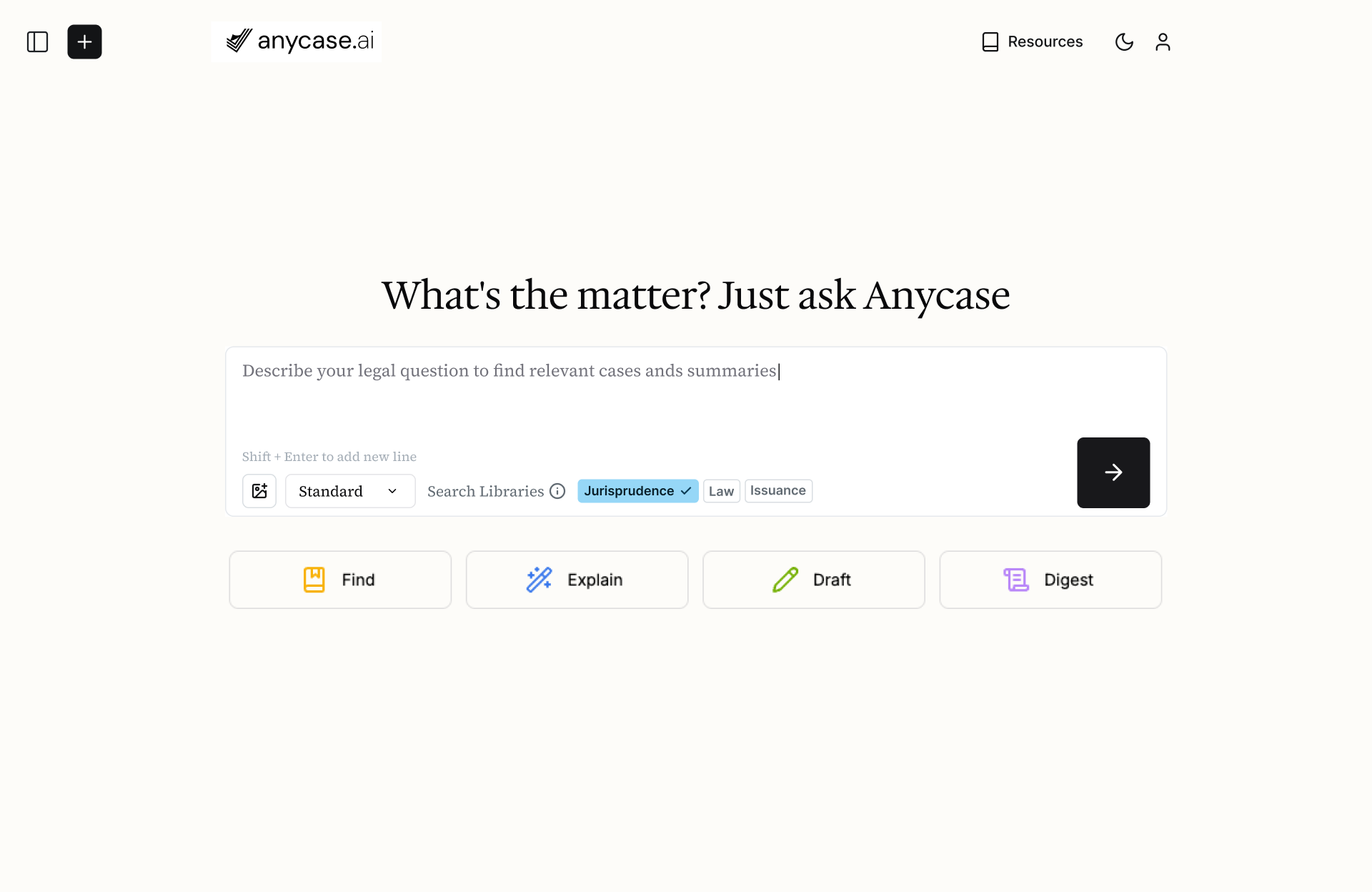
Key Learning
Sometimes innovation means making new technology feel comfortably familiar. Trust in AI must be supplemented with good user experience through familiar patterns and transparent verification.
View next project →
Trust Through Citations: Redesigning AI Legal Research for Litigation Lawyers
Trust Through Citations: Redesigning AI Legal Research for Litigation Lawyers
MY ROLE UX Design Consultant responsible for redesigning the citation experience and overall interface to match litigation lawyers' mental models and workflows.

Problem
Lawyers using Anycase.ai's AI-powered research struggled to trust AI-generated answers. While the AI provided accurate information, lawyers needed to verify every citation—their reputation depends on accuracy. The existing interface treated citations as afterthoughts (simple blue links), ignoring how lawyers actually work with legal references.
Journey
- Started: 50+ scattered components, no documentation, constant design debates
- 6 months: Core visual foundations and component library established
- Year 1: Intent-based pattern framework implemented
- Now: 40+ components, 20+ intent patterns, 90% reusability, 4 designers using it
Approach
- Visual Language: Transformed citations from links to highlight-style tabs, matching lawyers' physical annotation behavior
- Trust Building: Added hover popovers showing canonical document previews - lawyers can verify without leaving their flow
- Progressive Disclosure:
- Hover: Quick preview with source verification
- Click: Sidebar reader for deeper investigation
- Full view: Complete document in new tab
- Familiar Aesthetics: Shifted to serif typography and traditional legal document styling



Key Insight
Anchor the interface to what is familiar to user
The design was anchored on observations on how lawyers read and analyze files: through their trusty highlighters. Not only is this familiar, but it is a great break from such long and boring text. They read the paper once, but then most of the time, their intent is to scan and look for something specific. This is the first step into building trust.
Solution
Citation as Highlights
- Color-coded by source type (laws, jurisprudence, regulations)
- Labeled clearly (not just blue links)
- Scannable and distinct from regular text
Hover Preview System
- Shows actual canonical document (not just metadata)
- Quick verification without context switching
- Builds trust through transparency
Sidebar Reader Integration
- Direct link from citation to source
- Copy-to-cite functionality
- Maintains context while researching
The redesigned interface transforms how lawyers interact with AI-generated legal research. Citations now appear as highlighted tabs (mimicking lawyers' annotation habits) rather than simple links, with color-coding to distinguish laws (yellow), jurisprudence (blue), and regulations (green). On hover, a popover displays the actual canonical document preview—not just metadata—allowing instant verification without losing context. The sidebar reader provides a focused view where lawyers can dive deeper, with a "copy to cite" feature for easy reference building. The entire interface shifted to serif typography and traditional legal document styling, making the AI feel familiar rather than foreign. This multi-layered approach—from quick hover previews to deep-dive reading—respects how lawyers naturally verify information while building trust through transparency.

Key Learning
Sometimes innovation means making new technology feel comfortably familiar. Trust in AI must be supplemented with good user experience through familiar patterns and transparent verification.
View next project →
Trust Through Citations: Redesigning AI Legal Research for Litigation Lawyers
Trust Through Citations: Redesigning AI Legal Research for Litigation Lawyers
MY ROLE UX Design Consultant responsible for redesigning the citation experience and overall interface to match litigation lawyers' mental models and workflows.

Problem
Lawyers using Anycase.ai's AI-powered research struggled to trust AI-generated answers. While the AI provided accurate information, lawyers needed to verify every citation—their reputation depends on accuracy. The existing interface treated citations as afterthoughts (simple blue links), ignoring how lawyers actually work with legal references.
Insight
- Through observation and interviews with litigation lawyers, I discovered:
- Lawyers physically highlight everything - a habit from law school that continues throughout their career
- They need to verify sources instantly - trust is built through transparency
- They prefer familiar reading patterns from legal documents (serif fonts, traditional layouts)
- Quick verification is more important than deep reading initially
Approach
- Visual Language: Transformed citations from links to highlight-style tabs, matching lawyers' physical annotation behavior
- Trust Building: Added hover popovers showing canonical document previews - lawyers can verify without leaving their flow
- Progressive Disclosure:
- Hover: Quick preview with source verification
- Click: Sidebar reader for deeper investigation
- Full view: Complete document in new tab
- Familiar Aesthetics: Shifted to serif typography and traditional legal document styling



Key Insight
Anchor the interface to what is familiar to user
The design was anchored on observations on how lawyers read and analyze files: through their trusty highlighters. Not only is this familiar, but it is a great break from such long and boring text. They read the paper once, but then most of the time, their intent is to scan and look for something specific. This is the first step into building trust.
Solution
Citation as Highlights
- Color-coded by source type (laws, jurisprudence, regulations)
- Labeled clearly (not just blue links)
- Scannable and distinct from regular text
Hover Preview System
- Shows actual canonical document (not just metadata)
- Quick verification without context switching
- Builds trust through transparency
Sidebar Reader Integration
- Direct link from citation to source
- Copy-to-cite functionality
- Maintains context while researching
The redesigned interface transforms how lawyers interact with AI-generated legal research. Citations now appear as highlighted tabs (mimicking lawyers' annotation habits) rather than simple links, with color-coding to distinguish laws (yellow), jurisprudence (blue), and regulations (green). On hover, a popover displays the actual canonical document preview—not just metadata—allowing instant verification without losing context. The sidebar reader provides a focused view where lawyers can dive deeper, with a "copy to cite" feature for easy reference building. The entire interface shifted to serif typography and traditional legal document styling, making the AI feel familiar rather than foreign. This multi-layered approach—from quick hover previews to deep-dive reading—respects how lawyers naturally verify information while building trust through transparency.

Key Learning
Sometimes innovation means making new technology feel comfortably familiar. Trust in AI must be supplemented with good user experience through familiar patterns and transparent verification.
View next project →
Trust Through Citations: Redesigning AI Legal Research for Litigation Lawyers